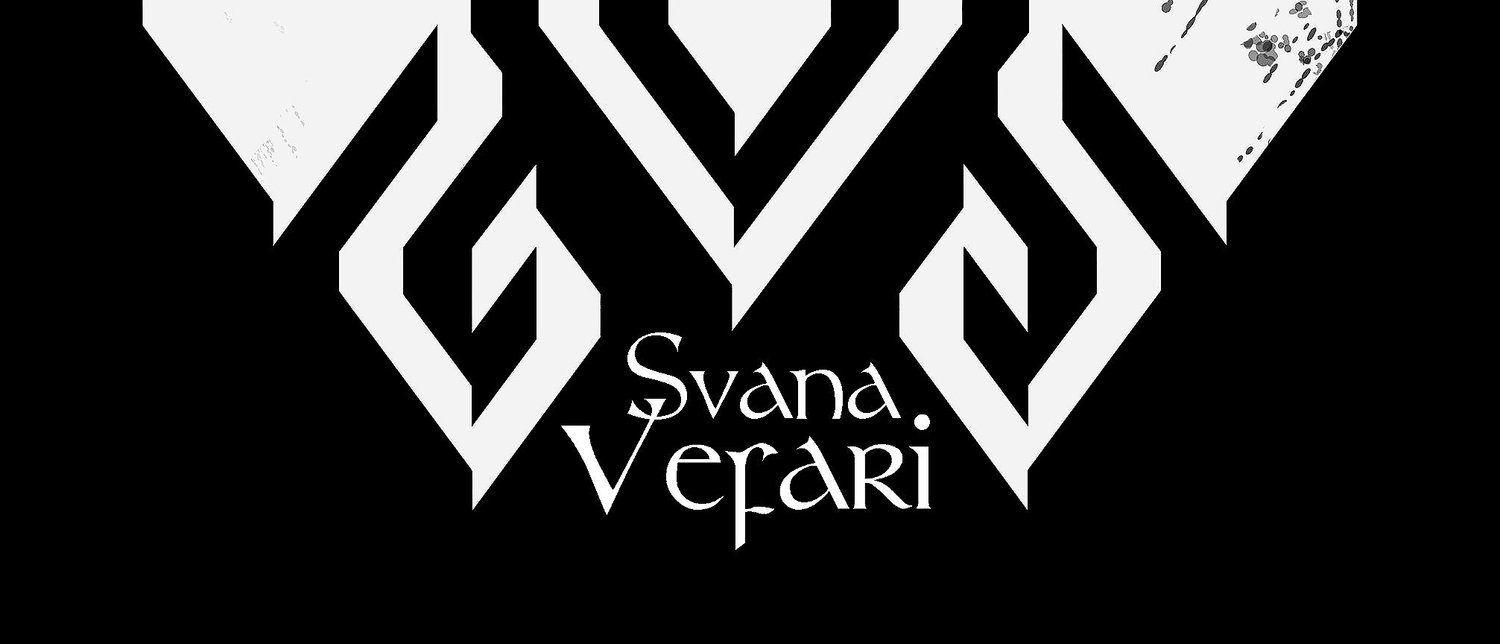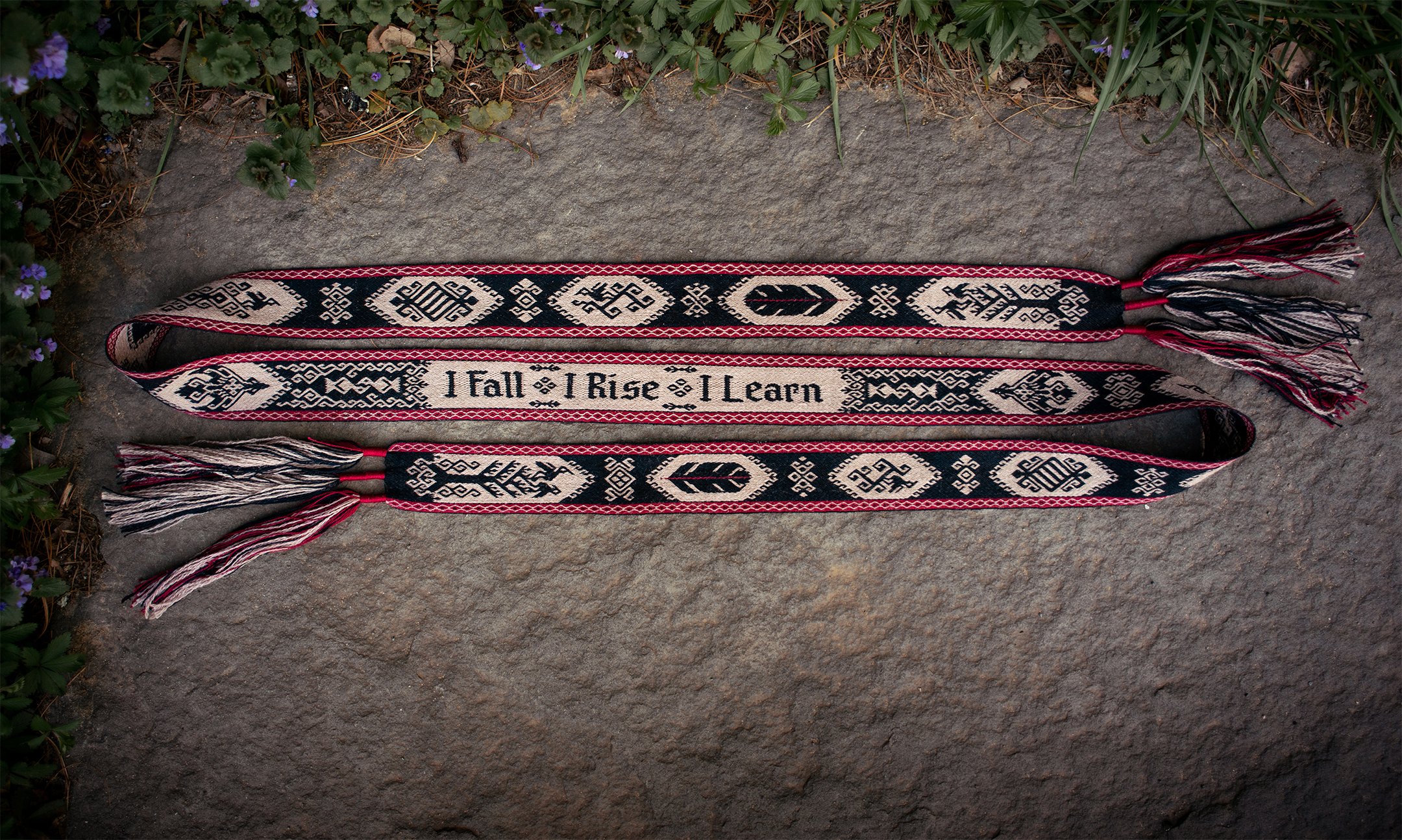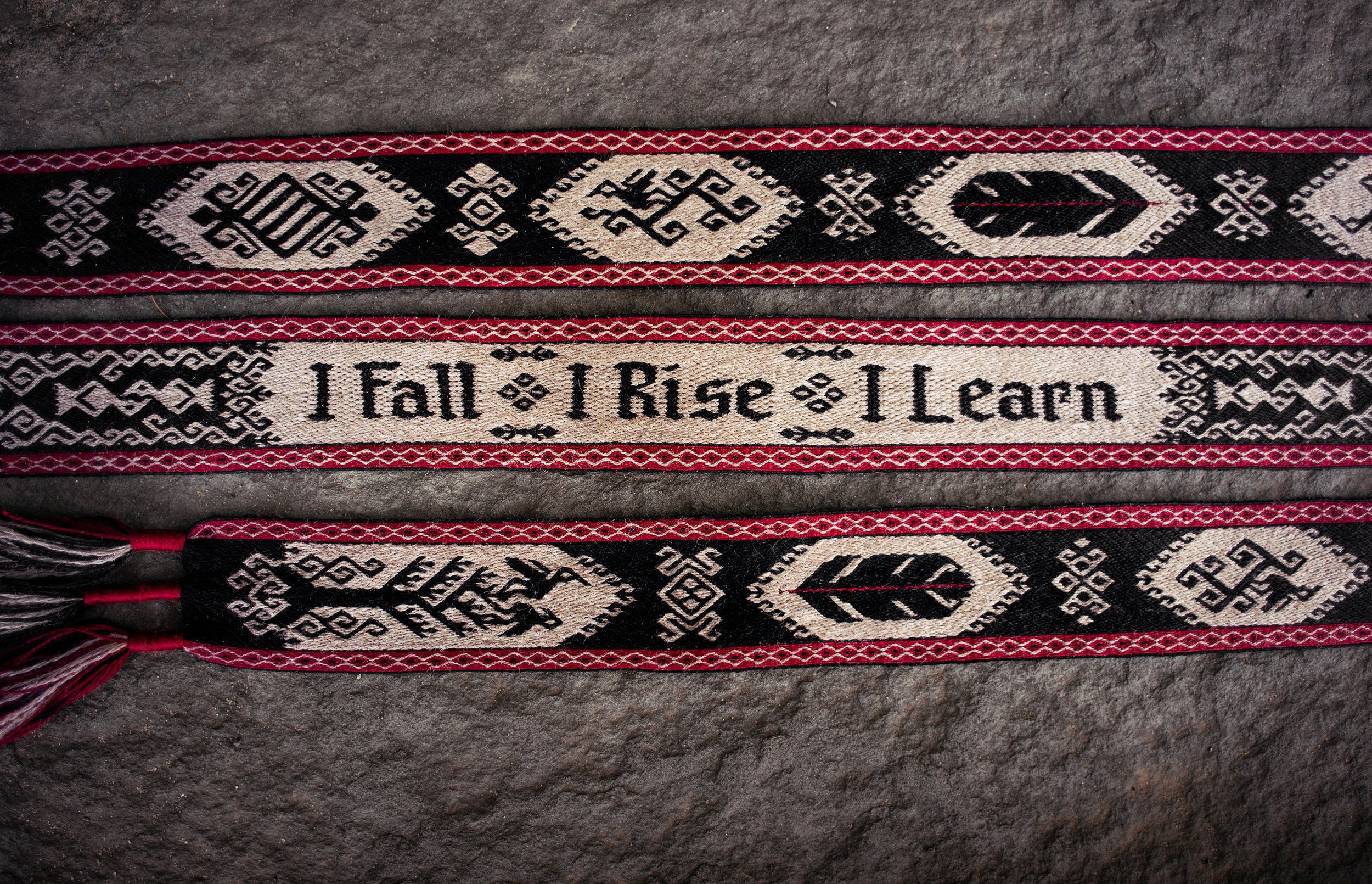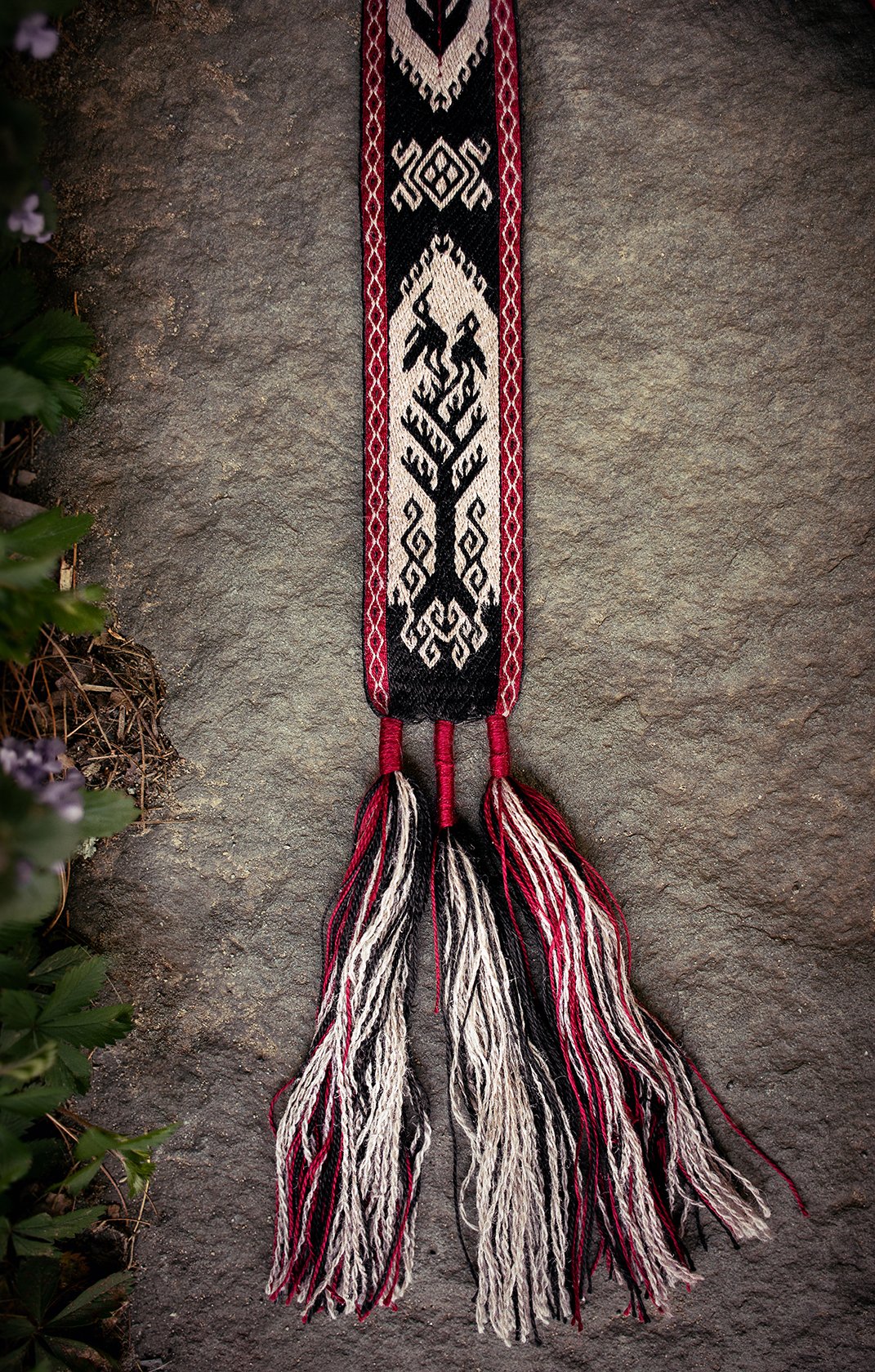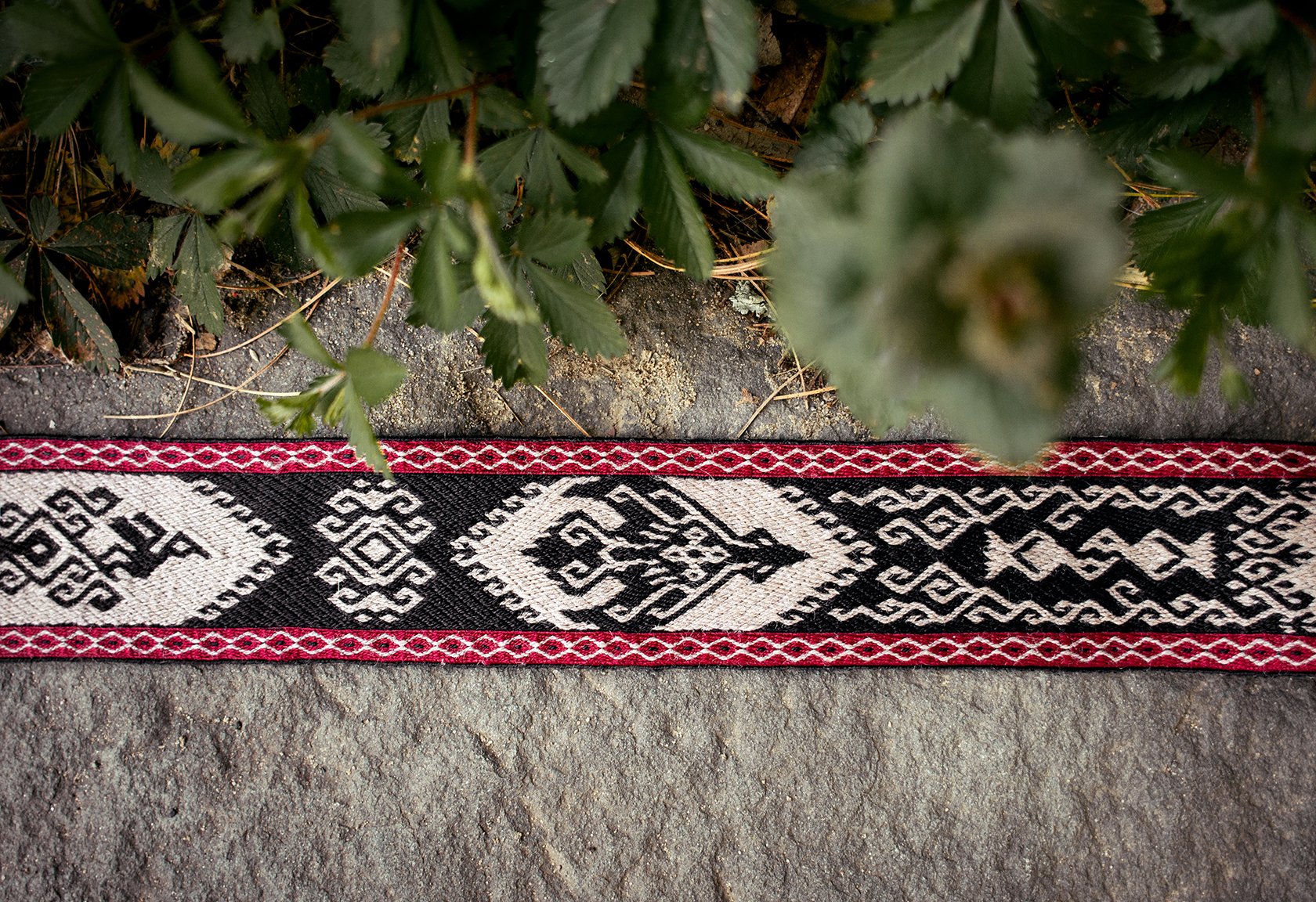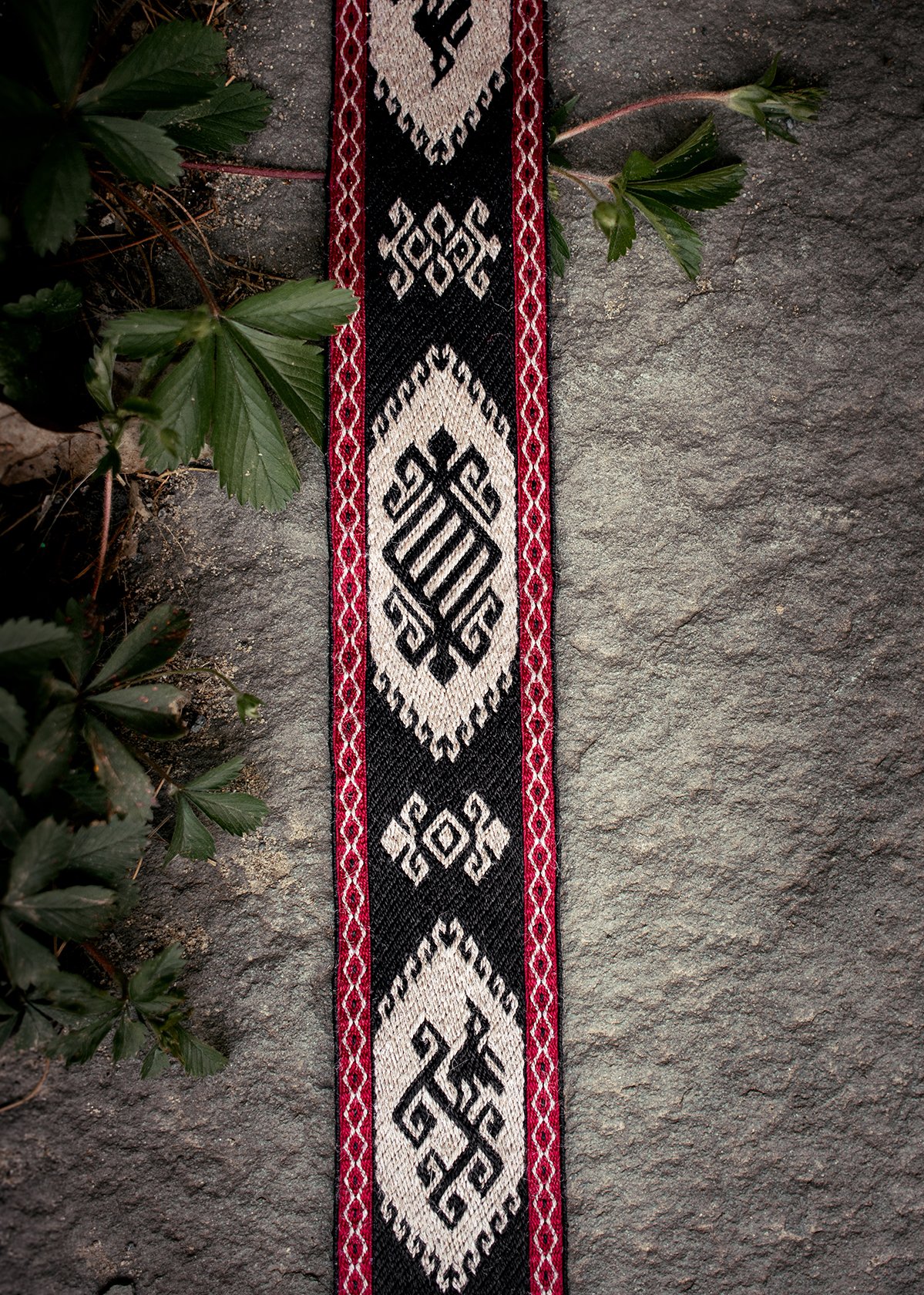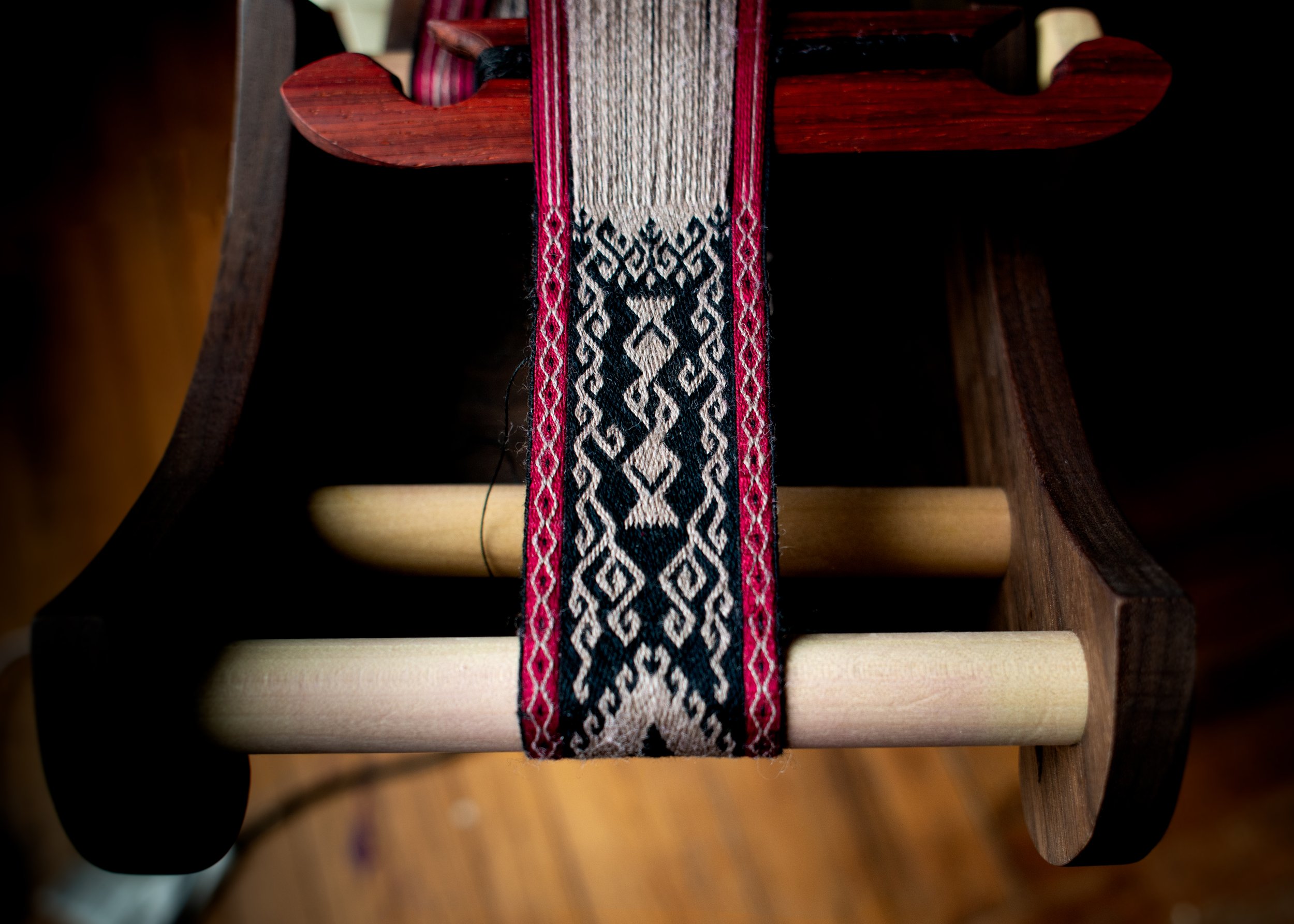Raven Band
Tablet Woven band in Broken 3/1 Twill and Double Face Technique
(and FREE 3/1 Broken Twill Raven pattern!)
I like birds.
I enjoy their imagery, their fluffy little feathers, and I love watching them fly around doing, well - bird stuff. So when I flipped through a copy of Claudia Wollny’s “A Lily Grove” for the first time, I was immediately drawn to the bird patterns within.
“A Lily Grove” is one of many books authored by the incredible fiber artist Claudia Wollny. Its pages are full of Broken 3/1 Twill patterns inspired by the motifs found on the tablet-woven stole and maniple of St. Donat, Arlon. They are not reproductions of this band (Wollny has another book, “Die fabelhafte Welt der brettchengewebten Stola und Manipel zu St. Donat, Arlon,” for those!). However, they are motifs and imagery inspired/created using the same aesthetic and technique as the St. Donat Maniple.
I spent many months patterning out my “Raven Band,” almost as much time as I spent weaving it. Some of the motifs and color changes are from Claudia Wollny’s beautiful book, “A Lily Grove 2”, and others were drafted by myself. Doing so was a significant turning point for me as a Tablet Weaver. To create my own patterns and place them all in the same band correctly and fluidly, I had to learn the very foundational rules of tablet weaving. Until this point, I followed patterns and never truly understood how those patterns were being created by turning the cards. When something went wrong with my weaving, it was a nightmare of turning cards for hours to hopefully correct what went wrong. I read Claudia Wollny’s “Tablets at Work,” focusing on the section about 3/1 Twill, and began to draw out patterns on graph paper within Photoshop. Charting the patterns in Photoshop made it easy to adjust incorrect pattern areas. Many weavers use programs like Excel to graph patterns, but Photoshop is a program I know well and am comfortable with. I then made many test weaves using cheap embroidery thread to see how my patterns looked and understand where I still needed to make revisions. When I truly understood the relationship between tablet slant, threading, and turning of the cards, making patterns became fun, and fixing mistakes, while still annoying, became much more manageable.
I wove a message in the center, reflecting how I feel about life in general and the pursuit of any artistic endeavor. I chose birds simply because I love them and because they may fall before learning to fly, therefore supporting the message I was trying to convey.
Technical Information
I wove this band in three techniques. The borders are Threaded-In, the main body is 3/1 Broken Twill, and the message in the center is Double-Faced. Switching between 3/1 Twill and Double-Faced technique required a lot of planning on paper. It helped a lot that the card threading for 3/1 Twill and Double-Faced are the same. There is room for improvement, but I am still happy with the result. I used 67 tablets, combining 2/20 silk (black and burgundy) and 2/18 wool/silk blend (cream color). The finished band is about 4.5 cm wide and about 183 cm long. It was woven on a double-sided inkle loom.
Important Information about the Feather Motif
You may notice that the feather motif has a color change traveling up the center, creating a visual stem for the feather, and this color change is not present throughout the rest of the band. Doing so required some rather tedious, extra work. A few rows before the feather began, I cut the two black warp threads from the center tablet. At this point, the cream color is on the top of the band, and the black threads are in the bottom position so any changes to them will not be noticed on top. Next, I inserted a temporary pin horizontally through the underside of the band and attached two burgundy threads to it, each about 10 inches long. I would tie the other ends of those burgundy threads to the black warp threads that I had cut previously, making sure the tension of those threads stayed consistent with the rest of my warp. I would then weave the feather. A few rows after I finished weaving the feather, I removed the pin (the burgundy threads have been woven enough at this point that the pin is no longer needed to anchor them). Then, I untied the burgundy threads from the black threads so that I could retie them together, adjusting it so the black threads begin again at this point and any leftover length of burgundy thread could be removed. After finishing the band, I used a sewing needle to hide any tails created from this process into the band's back.
A side note: This whole technique is a very similar process as to how one could fix a broken warp thread, using a needle to anchor a new one in a place where a warp thread has broken.
Final Thoughts
The biggest lesson I can take away from weaving this band is that combining silk threads with wool threads creates tension issues. The wool had much more stretch than the silk - which hardly had any stretch, so achieving equal tension throughout was very frustrating, and the wool threads were constantly loose. There are parts of the band that would have woven nicer if not for this issue. Halfway through weaving (directly after the words “I Fall”), the tension issues became so frustrating that I had to take the warp off my inkle loom and weigh the silk and wool threads separately. This meant I had two weights per card. It was HEAVY. Later, this lesson would come in handy when weaving Oseberg 34D.
While my Raven Band is not a historical reproduction of any particular band within period, it’s still woven using historical techniques as those used to create the Arlon band (the double-faced center is an exception). As a member of the Society of Creative Anachronism, I wanted a band to wear with my garb that was both personal and symbolic while still exemplifying historical techniques used within period.
Gallery
Free Raven Pattern!
I used www.twistedthreads.org to graph this pattern. I highly recommend this site for anyone who wants to chart out a Tablet Weaving pattern in a way that is organized and easy to read. It’s free to be a member, but I highly encourage you to donate to its creator if you like to use the site.
For this pattern, you will need to understand the basics of tablet weaving. It doesn’t explain how to Tablet Weave. The notation below the weaving chart describes how to read it. To keep the background z-twill weave correct when placing this into or adding this to other designs, knowledge of how to weave 3/1 Broken Twill technique will be required. I highly recommend Claudia Wollny’s book, “Tablets at work” for learning this technique.
Documentation
Wollny, C. (2016). A Lily Gove: More than 100 and 1 tablet weaving designs in the Arlon style with 164 weaving patterns (1st ed.). Claudia Wollny Edition. www.brettchenweben.com
Wollny, C. (2019). A Lily Gove 2: More than 270 new tablet weaving patterns for tablet weaving un the Arlon style (1st ed.). Claudia Wollny Edition. www.brettchenweben.com
Wollny, C. (2015). Die fabelhafte Welt der brettchengewebten Stola und Manipel zu St. Donat, Arlon: Mit 29 Webbriefen (1st ed.). Claudia Wollny Edition. www.brettchenweben.com
Wollny, C. (2019). Tablets at Work: The Book of Basic Tablet Weaving Techniques (2nd revised ed.). Claudia Wollny Edition. www.brettchenweben.com
